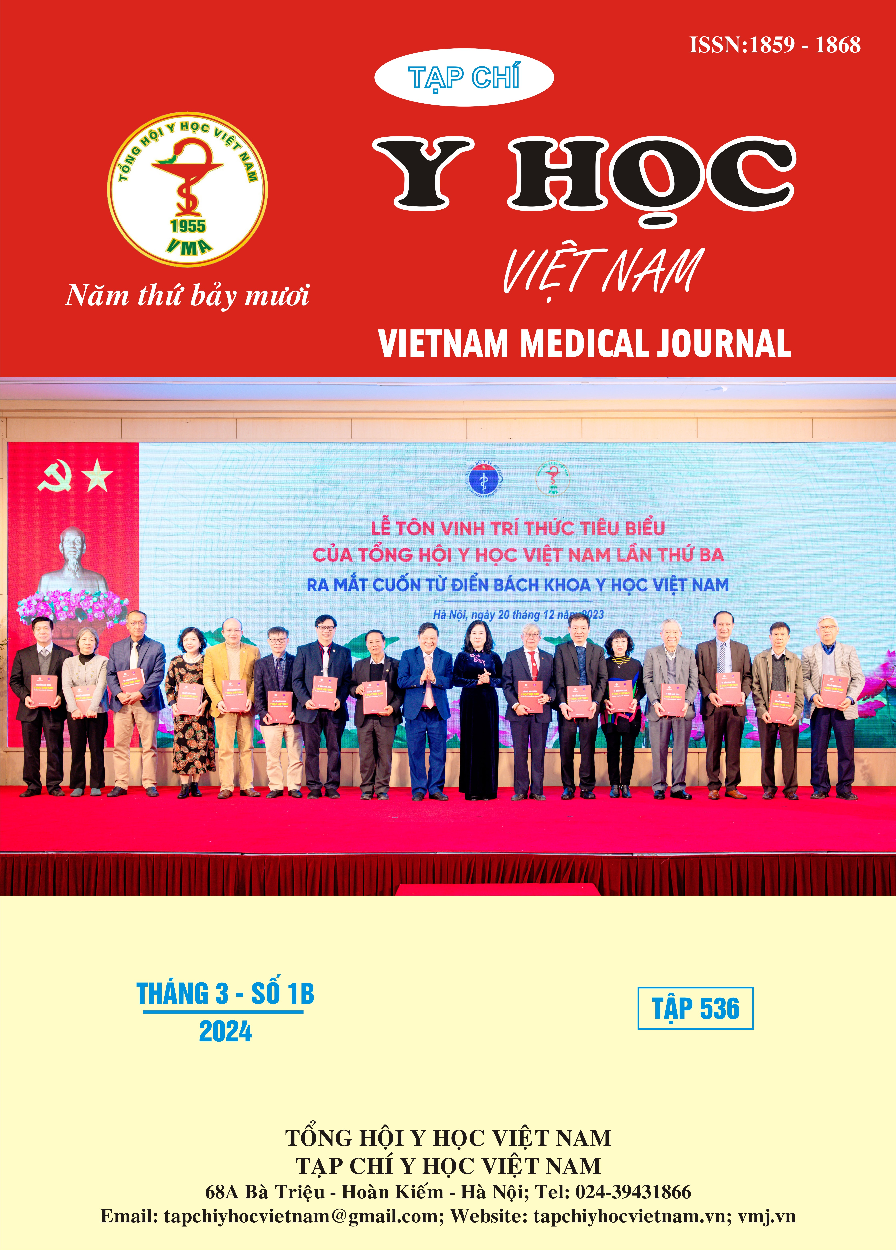DISTRIBUTION AND ANTIBIOTIC RESISTANCE OF PSEUDOMONAS AERUGINOSA AT NGUYEN TRI PHUONG HOSPITAL FROM 2020 TO 2023
Main Article Content
Abstract
Introduction: Antibiotic resistance of Gram-negative strains of bacteria, including Pseudomonas aerugiosa, is increasingly complex. Understanding the microbiological characteristics of P. aeruginosa supports infection control and antibiotic use in hospitals. Objectives: To characterize the distribution and tendency to change antibiotic resistance of P. aeruginosa strains circulating at Nguyen Tri Phuong Hospital in the period of 2020 – 2023. Subjects and methods: the study describes a series of cases on P. aeruginosa strains isolated from patients treated at Nguyen Tri Phuong Hospital from January 2020 to December 2023. Differences in antibiotic resistance tendencies are examined using Chi squared. Results: During the study period, 940 specimens were isolated as P. aeruginosa, most concentrated in internal medicine departments (58.4%); In which, the highest proportion of specimens were respiratory specimens (48.9%), and purulent/exudate/catheter specimens (34.3%). After four years, P. Aeruginosa remains nearly completely sensitive to Colistin and exhibits resistance below 50% to most of the tested antibiotics include: carbapenem (imipenem 24.5%), 3.4th generation cephalosporins (cefepime 24.4%, ceftazidime 22.5%), aminoglycosides (amikacin 21.0%, gentamicin 27.4%; tobramycin 25.7%, netilmicin 22.6%) and piperacilin +tazobactam 10.9%. The antibiotic resistance rate of P. aeruginosa in clinical departments after four years was similar to the hospital-wide model, except that the ICU had significantly higher resistance rates than other departments to most antibiotics. The trend toward antibiotic resistance of P. aeruginosa has increased significantly with the majority of antibiotic trials. Conclusions: P. Aeruginosa remains 100% sensitive to Colistin and shows resistance below 50% to the majority of tested antibiotics. There is an increasing trend in resistance to antibiotics such as ciprofloxacin, cefepime, imipenem, piperacillin+tazobactam, and tobramycin. Controlled use of antibiotics is necessary in treating infections caused by this bacterium.
Article Details
References
2. Nguyễn Thị Đoan Trinh, Phan Thị Lan Phương, Hoàng Thị Minh Hòa, Nguyễn Huy Hoàng (2023). Đặc điểm gây bệnh và tính kháng kháng sinh của Pseudomonas Aeruginosa tại Bệnh viện C Đà Nẵng. Tạp chí Y dược học Cần Thơ, 58:159-166
3. Trần Ngọc (2018). Nghiên cứu tình hình sử dụng kháng sinh trong điều trị nhiễm khuẩn bệnh viện tại khoa Hồi sức chống độc ở Bệnh viện Đa khoa Tây Ninh. Luận văn Thạc sĩ Dược học, Hà Nội.
4. Lê Văn Cường, Dương Quang Hiệp (2022). Sự phân bố và tính kháng thuốc của trực khuẩn mủ xanh tại Bệnh viện đa khoa tỉnh Thanh Hóa năm 2020. Tạp chí Y học Việt Nam, 511(1):114-118. https://doi.org/10.51298/vmj.v511i1.2059
5. Khan, J. A., et al. (2008). Prevalence and resistance pattern of Pseudomonas Aeruginosa against various antibiotics. Pakistan journal of pharmaceutical sciences, 21(3):311-315. PMID: 18614431.
6. Xu, J., et al. (2013). Surveillance and correlation of antimicrobial usage and resistance of Pseudomonas Aeruginosa: a hospital population- based study. PLoS One, 8(11), e78604.
7. Bùi Thị Hương Giang, Nguyễn Đức Quỳnh (2022). Đặc điểm kháng kháng sinh và các yếu tố nguy cơ tử vong của nhiễm khuẩn bệnh viện tại Khoa Hồi sức tích cực Bệnh viện Bạch Mai. Tạp chí Y học Việt Nam, 515(1):23-27. https://doi.org/10.51298/vmj.v515i1.2666
8. Nguyễn Thành Nghiêm, Phạm Thành Suôi (2022). Mô tả đặc điểm vi khuẩn và tình hình đề kháng kháng sinh của vi khuẩn trên bệnh nhân viêm phổi bệnh viện tại bệnh viện đa khoa Thành phố Cần Thơ. Tạp chí Y Dược học Cần Thơ (51), 140-147. https://doi.org/10.58490/ctump.2022i51.323


